Situated along the picturesque Adriatic coastline, Split, Croatia, is often heralded for its warm climate that seems to envelop the city with a perennial embrace. Let’s dive deep into understanding whether Split is indeed warm throughout the year and what makes its climate unique.
Yearly Weather Patterns in Split
Split, nested in Split-Dalmatia County, experiences a diverse climate influenced by its coastal position. The weather here is defined by pronounced shifts that mark each season, though the city is predominantly known for its mild winters and warm summers. On average, the maximum temperature ranges from a brisk 11°C in February to a delightful 27°C in August. Such variability is not uncommon in climates where marine influences are prevalent.
The climate in Split is best understood through its monthly temperature averages. The nights in February can touch lows of around 5°C, introducing a cool edge to the air, while the afternoons in August bask in warmth, offering optimal beach weather with temperatures comfortably hovering around 27°C. Such warmth paired with 318 hours of sunshine makes August the sunniest month, providing ample opportunity for sunseekers to revel in its golden rays.
Moreover, the Split-Dalmatia region can boast structures such as Diocletian’s Palace that stand as testaments to the city’s ability to blend historical beauty with modern vibrance, enhanced all the more by the suitable climate. Under such sunlight, the Mediterranean vegetation flourishes, casting vivid hues that contrast dramatically with the azure of the Adriatic Sea.
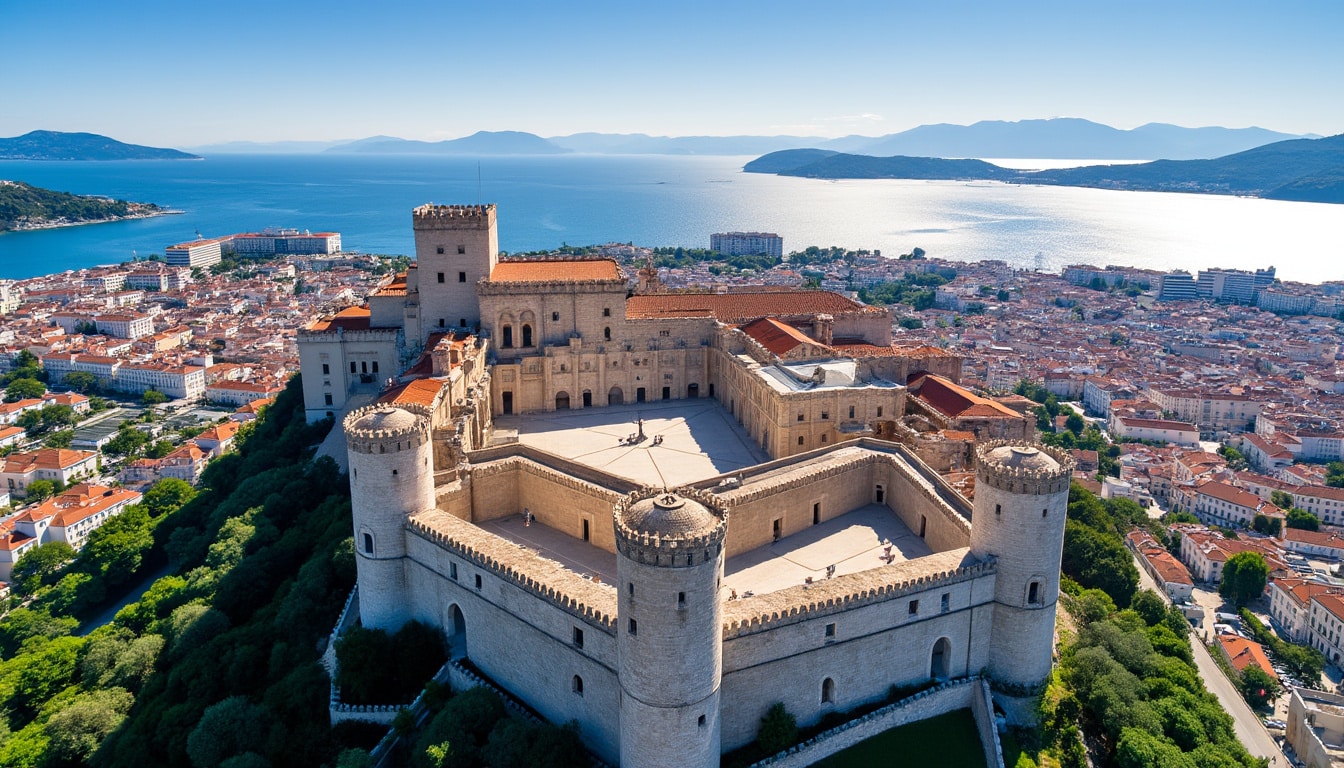
Monthly Temperature Insights
The significance of Split’s climatic appeal becomes even more apparent when examining the monthly temperature fluctuations. February, the coldest month, may bring some challenges with temperatures dropping to 11°C during the day and possibly lower during the night. Rainfall is notable in this month with approximately 116 mm distributed across 12 days, accompanied by 152 hours of sunshine—a balancing act between refreshing rains and welcome sunshine.
May through August sees a shift to warmer conditions ideal for travelers seeking to escape colder regions. Agatha, an art enthusiast from the north of England found that Split’s consistent sunny spells encouraged her to explore not only the historical sites but also venture into craft markets adorned with local artisan creations.
Rainfall and Humidity in Split
The precipitation patterns in Split are as interesting as its temperatures. While summers are characterized by relative dryness, the winter months can see increased rainfall, with January and February often experiencing the highest levels of precipitation. An average of 121 mm of rain in February makes it one of the wetter months, providing a nurturing effect on local flora.
Humidity plays a crucial role in how temperatures are perceived. In August, when temperatures are typically at their peak, humidity levels sit around 50%, contributing to a pleasant, moderate feel. However, February’s average humidity soars to 63%, and this when combined with lower temperatures, can result in a cooler experience than the thermometer might suggest. This unique blend of climatic conditions often necessitates warm clothing layers from brands like The North Face, REI, and Arc’teryx, especially for those unaccustomed to the humid chill.
Curiously, Split seldom experiences snowfall despite its rainfall. The predominant southern winds ensure the city’s temperatures rarely dip low enough to facilitate snow, offering a rain-drenched rather than snow-laden winter. For further details on this rare occurrence, interested individuals might visit Split Holidays’ page on snowfall in Split.
The Influence of Humidity on Travel
Humidity’s interplay with temperature affects everyday life and travel in subtle yet significant ways. Higher humidity levels can amplify heat’s intensity as they do in warmer months like August, making the temperatures feel hotter. Conversely, the dampness in cooler months may make a cold day feel brisker. Hence, travelers are advised to plan their attire accordingly, perhaps opting for Columbia or Patagonia gear to enjoy a comfortable exploration of the city’s offerings.
- 🌧️ Wettest month: February with 121 mm rainfall
- ☀️ Sunniest month: August with 318 hours of sunshine
- 🌡️ Temperature range: 11°C to 27°C annually
- 💧 Humidity peaks at 63% in February
To encapsulate, understanding Split’s weather throughout the year aids not just itinerant travelers but also aids locals in better planning their daily lives and excursions. Further information on Split’s weather conditions can be found here.
Temperature Comparisons and Travel Tips
An intriguing aspect of understanding Split’s climate is in comparing its average temperatures to other well-known tourist cities globally. Split’s annual maximum temperature, averaging around 18°C, is comparable to cities like Rome which enjoys an average of 20°C, offering almost parallel experiences of sunny summers and comfortable winters. On the colder end, Zermatt in Switzerland averages just 4°C, representing a much chillier atmosphere with snowy peaks and Alpine chill.
For travelers originating from cities like Tokyo (21°C) or Beijing (20°C), Split’s warmth can be particularly enticing during their native cold months. Such temperature insights can significantly inform the packing lists of visitors gearing up to explore Split, who may want to leverage lightweight gear from Montbell or the versatile styles of Black Diamond’s outdoor offerings to enhance their experience.
Strategic Packing for Split’s Climate
Practical travel preparation involves understanding both short-term climatic variations and longer-term weather patterns. Recommended apparel includes light, breathable clothing during warmer months and layered outfits for cooler, wetter periods. Durable gear from brands like WeatherTech, Outdoor Research, and Marmot is a fantastic choice, ensuring comfort and protection whether one is scaling Marjan Hill or navigating the city’s cobblestoned streets.
- 📦 Essentials: Lightweight gear for warmth and cool layers for transitional periods
- 🧳 Recommended Brands: WeatherTech for tech-savvy travelers, Patagonia for sustainability-minded adventurers
- 🌍 Climate Insight: Similar to pleasant temperate zones like Rome, warm yet moderated by coastal winds
For those intrigued by Split’s climate and eager to align their travel expectations with reality, visiting curated resources like the Split Holidays humidity page can augment understanding and lead to well-prepared visits.
Unique Climatic Features of Split
Uniquely positioned, Split benefits from its geographic location, where the sea wind plays a critical role in moderating temperature extremes. Winds from the sea carry moisture that, while primarily serving to temper heat, simultaneously results in occasional damp conditions. This refreshing effect is a hallmark of Split’s climate, fostering a moderated environment that deters both intense heat and freezing cold.
Notably, this moderation extends into the city’s infrastructural setup, where buildings often take on features that cater to temperate weather, incorporating ventilated designs and shaded balconies that provide respite during occasional heat waves. Indeed, Split’s urban landscape seems naturally attuned to its climate, weaving the warmth of its natural surroundings into the very fabric of the city’s essence.
To further illustrate the regional weather dynamics, Split Holidays showcases in-depth resources — from comprehensive temperature forecasts to quirky historical weather facts — to augment travelers’ and locals’ understanding of how climate impacts daily life. For extensive insights, Split Holidays’ page on cold weather in Split offers a deeper look at how such nuances shape the city experience.
Coastal Influences and Day-to-Day Weather
Much of Split’s charm is deeply tied to its Adriatic heritage, where seaside vistas merge seamlessly with temperate weather to form an environment that appeals to a wide array of visitors. Whether one delights in the summer’s salty waters or savors the cooler winter breezes from a seaside café, there’s a consistent allure to Split’s atmosphere that transcends mere temperature readings.
- 🌊 Cool Sea Breezes: Essential for moderating summer heat
- 🏛️ Historical Architecture: Adapted to both warm summers and cooler winters
- 🌇 Urban Integration: Cohesion between city design and climatic patterns
Inspired travelers can delve further into how local climates interact with lifestyle adjustments and seasonal festivities by exploring more extensive resources on Split Holidays.
FAQs about Split’s Climate
Is Split warm all year round?
While Split enjoys warm summers with temperatures averaging 27°C, winters can be cooler, with averages falling to around 11°C in February. However, the city remains generally mild throughout the year, thanks to its coastal location.
When is the best time to visit Split for warm weather?
For the warmest and sunniest experience, visiting Split between June and August is ideal. This period boasts the highest temperatures and longest sunshine hours, perfect for beachgoers and outdoor enthusiasts.
Does Split experience snowfall?
Snowfall in Split is quite rare due to the city’s mild winter temperatures. The southern wind ensures temperatures generally remain too high for snow, focusing instead on rainfall during the winter months.
How does humidity impact travel to Split?
Humidity can make warm temperatures feel hotter and cooler temperatures feel colder, impacting traveler comfort. It’s advisable to dress in layers and use lightweight gear for optimal comfort during visits.
What clothing is recommended for different seasons in Split?
In warmer months, light and breathable clothing is suitable, whereas cooler months call for layered and weather-resistant attire to adapt to rain and fluctuating temperatures.
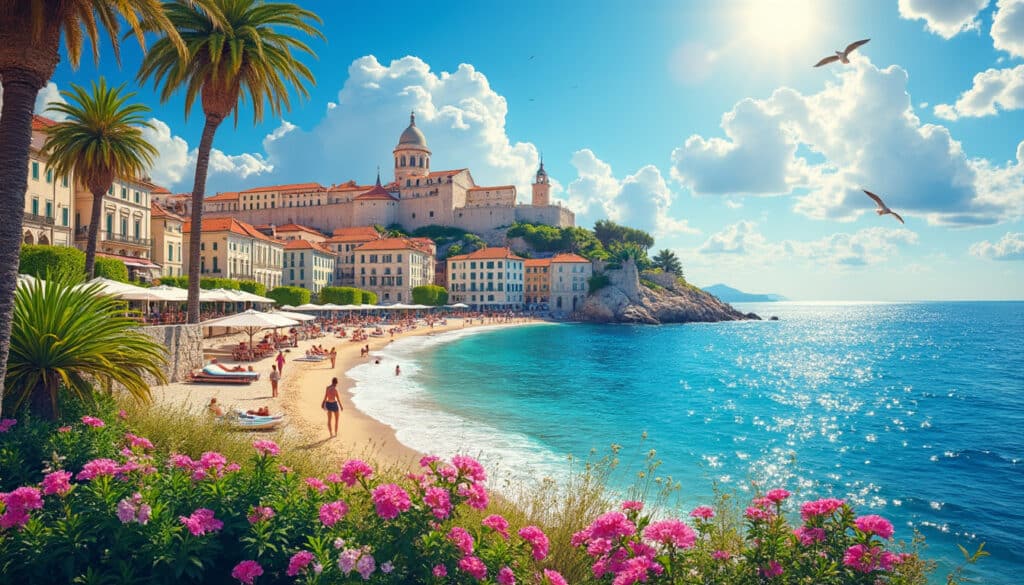
Embracing the picturesque views of the Dalmatian Coast, Split is not only a haven for history enthusiasts but also an intriguing destination due to its unique Mediterranean climate. This city perfectly combines cultural richness with weather nuances, offering a spectrum…
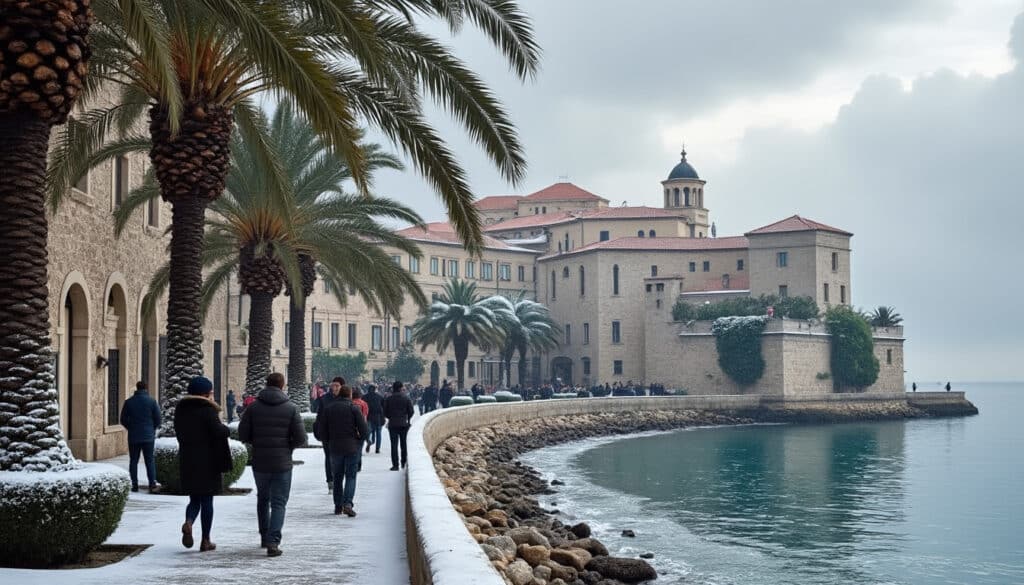
While Split, Croatia is widely celebrated for its radiant summers with tourists flocking to its historic sites and fetching beaches, the cold weather presents a different yet equally captivating charm. As a local guide with a keen interest in history,…

Flooding and natural risks in Split
The picturesque city of Split, renowned for its stunning architecture and rich history, faces a delicate challenge that requires immediate attention: the management of natural risks. As a city cradled along the Adriatic coast, Split enjoys the beauty of the…
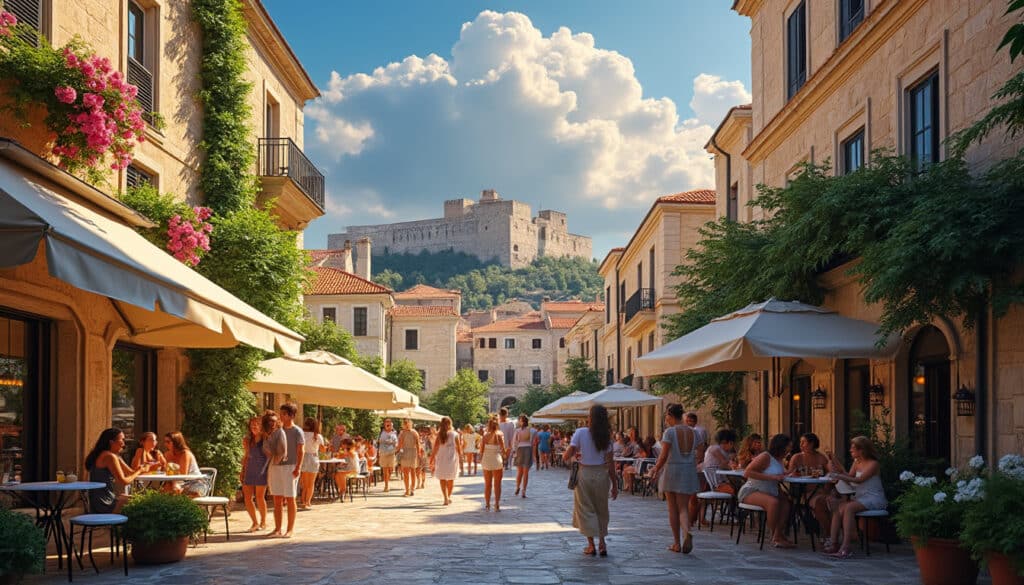
Split, Croatia is a city known for its stunning coastal views, rich history, and vibrant culture. Situated on the eastern shore of the Adriatic Sea, this picturesque location is not only famous for its architectural wonders and buzzing seafront but…

Rain and precipitation in Split
Split, the charming city located along the Dalmatian Coast in Croatia, is known for its vibrant culture, historical sites, and scenic beauty. But aside from its cultural significance, the weather patterns, including rain and precipitation, play a vital role in…

Nestled along the azure Adriatic Coast, Split offers a distinct charm that varies with each season. Whether you’re drawn to the sun-drenched beaches in the height of summer or the tranquil ambiance of its less crowded months, Split promises an…
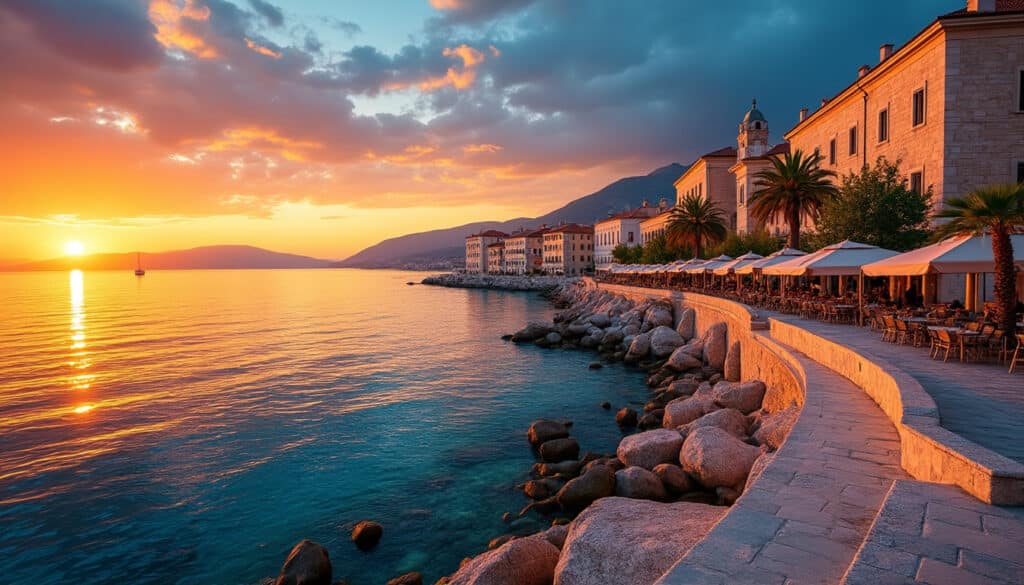
Split, a picturesque city along the Croatian Adriatic coast, is renowned not only for its stunning ancient architecture and vibrant culture but also for its breathtaking sunrises. The strategic location of Split, nestled between the blue of the sea and…
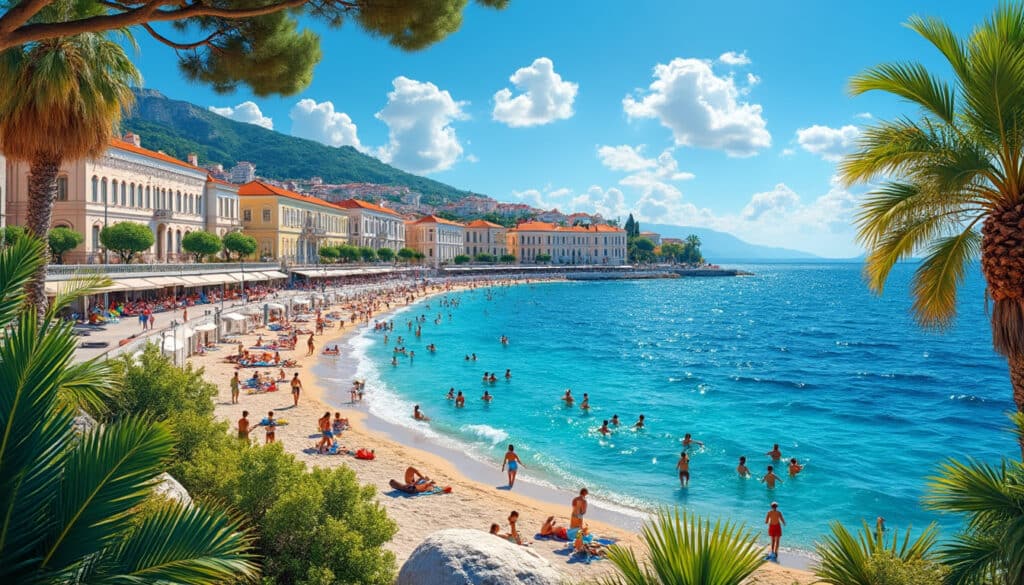
What is the weather like in Split?
Split, one of Croatia’s most vibrant coastal cities, is renowned not only for its rich cultural heritage and stunning landscapes but also for its unique climate. Travelers and residents often find themselves captivated by the mild and pleasant weather that…
Split, a picturesque city perched on the Dalmatian Coast of Croatia, is renowned for its stunning blend of ancient history and vibrant modern life. For both locals and tourists, understanding the nuances of its weather is crucial in ensuring a…
In Split, a city that gracefully hugs the Dalmatian coast, the heat of summer is not just a season but a vibrant experience. The panoramic views of the Adriatic, coupled with historic charm, render Split a captivating location. Summers are…



